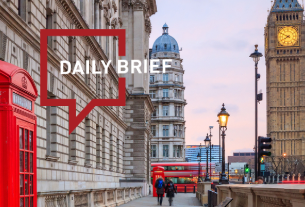
While Chinese travelers are eager, their outbound leisure travel will not be back to pre-COVID levels until the second quarter of 2023 at best, according to a new study from consulting firm Oliver Wyman.
Quarantine measures are the key roadblock for most travelers, which continues to make Hainan Island, China’s rising duty-free shopping hub, one of the most popular leisure destinations.
“Chinese consumers are looking forward to outbound travel, but border re-openings alone are not enough to convince them to travel again,” said Jacques Penhirin, a partner at Oliver Wyman. “What stands in the way are quarantine requirements. No Chinese leisure travelers are interested in international travel with the current 14 to 28 days quarantine requirements. Having no quarantine is critical for travelers, which is only expected to happen when China and other major countries complete their mass vaccination programs.”
The study is based on Oliver Wyman’s Pandemic Navigator, an AI enabled tool, and consumer sentiment survey conducted in late March 2021. According to the survey, Hong Kong remains the most desired destination on travelers’ wish lists, with 41 percent of the respondents seeing the city as one of their top destinations once the border reopens.
“Hong Kong is a key destination to visit for Chinese travelers, given the city is expected to open its borders without quarantine requirements on both sides much earlier than the rest of the world,” said Imke Wouters, a partner at Oliver Wyman. “Our study predicts some Southeast Asian countries are going to see a full recovery as early as the beginning of 2023. That gives Hong Kong a short window of opportunity to re-establish its tourism and attract tourists from the mainland, specifically from the fourth quarter of 2021 to the end of 2022.”
Hong Kong’s regional status as a shopping paradise is however being challenged by Hainan, with 40 percent of the survey respondents choosing the island as their top destination even when international travel is available.
Total visitor arrivals in Hainan have already returned to 2019 levels since August 2020, as a result of international travel restrictions and the favorable offshore duty-free policies. The penetration of Hainan’s duty-free market still has huge room to grow. With lower travel expenses and better shopping experiences, 70 percent of the surveyed consumers considered Hainan as their long-term shopping mecca, even when international travel can resume.
“Hainan’s opportunity looks sizeable, but its steep discounts pose risks on pricing and profitability for brands,” said Wouters. “The brands and retailers operating in Hainan need to strike a balance across sales maximization, margin erosion, and more importantly impacts on China’s price perception due to Hainan’s low prices.”
Short-haul travel is preferred among Chinese travelers, while long-haul destinations such as Europe and the US are unlikely to see a full recovery until mid-2023 earliest, according to the study. Early outbound travelers from China tend to be the younger generation and big spenders who are eager to shop.
Group tours are losing their attraction as social distancing is one of the concerns of travelers. Nearly 70 percent of the survey respondents said they would prefer making their own travel plans rather than joining group tours, while only 40 percent of the respondents were willing to do so pre-COVID.
“We estimate approximately USD 200 billion consumer spend trapped in China to be readily unleashed once international travel resumes,” said Penhirin. “Asia is likely to see Chinese tourists first when borders reopen, but the numbers expected will still be far from a full recovery. We anticipate the vaccine rollout to be accelerated to expedite the pace of tourism worldwide.”




